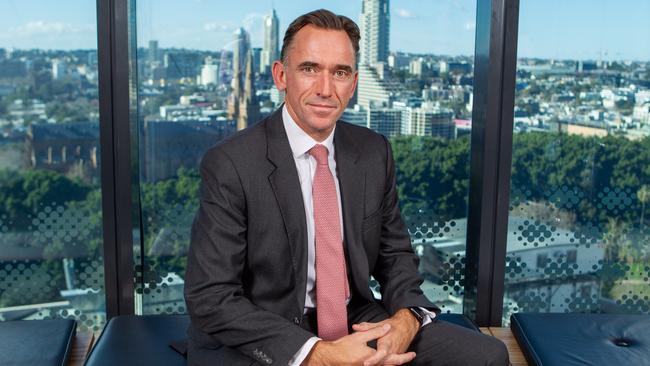Profits season likely to ‘underwhelm’, warns JPMorgan
As Australia’s corporate reporting season gets underway, a preponderance of downgrades in the past few months may have lowered the bar enough to allow a less pessimistic view.
As Australia’s corporate reporting season gets underway, a preponderance of downgrades in the past few months may have lowered the bar enough to allow for a better than expected outcome.
Certainly that has been the case in the US quarterly reporting season. Despite surging interest costs, high inflation and slowing economic growth, about 81 per cent of S&P 500 companies have beaten earnings estimates, compared to a norm of 76 per cent, with an average beat of 6 per cent.
On a rough count there have been about 20 profit warnings from ASX 200 companies since mid-May.
While concentrated in the consumer discretionary sector, the bad news has also spanned the consumer staples, materials, health care, industrials, technology and financial sectors.
Meanwhile, there have only been a handful of upgrades, mostly in the travel sector. Hopefully, much of the bad news is out of the way and companies have kept some good news up their sleeves. Cost-cutting programs and share buybacks are two possible themes for some companies.
Of course the S&P/ASX 200 rose 4.5 per cent in the past two months and August to September is a seasonally weak period.

The 12-month forward price-to-earnings multiple of the index is in line with its long-term average of 15 times, the economy is slowing and more interest rate hikes are possible.
So far this month, the ASX has fallen 1.4 per cent as US bond yields hit nine-month highs after the US government’s debt funding need for the September quarter blew out by 37 per cent to $US1 trillion ($1.5 trillion), prompting Fitch Ratings to cut its credit rating as S&P did back in 2012.
JPMorgan chief APAC equity strategist Jason Steed warns that the “bottom up” view from his analysts is that this reporting season is likely to “underwhelm”.
On his reckoning, 31 per cent of reporting ASX 200 companies are likely to miss expectations.
A much smaller number of 19 per cent of reporting companies are likely to beat expectations.
More misses than beats are likely in the communications, consumer discretionary, consumer staples, energy, financials, health care, industrials, technology and property sectors, according to Steed.
More beats than misses are only expected in the utilities and materials sectors.
In terms of aggregate earnings, his team’s forecasts are now pointing to a 6 per cent fall in earnings per share, albeit largely due to the materials and energy sectors. For the sharemarket excluding materials, EPS is expected to be up by 6.3 per cent on-year on JPMorgan numbers.
A fall in materials sector earnings is expected to be concentrated in the bulk miners, where JPMorgan projects a 35 per cent fall in EPS, after two consecutive years of strong profit growth.
Healthcare is also set to endure a difficult FY23, with EPS expected to be down 13 per cent.
Consumer discretionary sector EPS is expected to rise about 12 per cent despite the “headwinds” facing the sector, though the bulk of the sector’s weighting is concentrated in Aristocrat and Wesfarmers. The former is set for strong EPS growth of 17 per cent and Wesfarmers should manage 2 per cent growth, while falls are seen in retailers, with the rate of descent accelerating in FY24.
But MST senior analyst Hasan Tevfik sees a positive “inflection point” for Australian profits ahead.

A similar inflection point for US profits was seen in February, according to Tevfik.
The consensus estimate for 12-month forward EPS in the S&P 500 stopped falling and has risen 3 per cent since then, helping to justify the gains in US stock prices seen this year.
“The recovery in forward EPS highlights the benign downturn for the US economy and US company profits – slowdown but no collapse,” he says.
“For several reasons, Australian profits are lagging those in the US this cycle and now we could be approaching our own inflection point.”
He sees the recent fall in ASX 200 EPS estimates as part of a “mid-cycle” slowdown and expects the upcoming reporting season to “help confirm the potential early stages of recovery” in Australia.
Bottom-up consensus expectations are for ASX 200 EPS to fall 1 per cent for the 12 months to June 2023 and 5 per cent for the 12 months to December 2023, albeit exaggerated by commodity producers. From there, forecasts are for a moderate recovery in earnings per share.
“We broadly agree with these bottom-up assumptions and expect a moderate downturn in corporate profits to be followed by a moderate recovery,” Tevfik says.
“It is too early to call the end of the current profits cycle.”
He expects reporting to show a still buoyant demand backdrop is allowing companies to pass through commodity cost increases; easing supply-chain issues are supporting profit margins; lower inventories are allowing companies to boost their cash and deliver productivity improvements; China and New Zealand-facing companies expect stronger demand; companies pushing for productivity improvements amid higher award wages and a tight labour market; and the cost of debt is set to remain high, weighing on leveraged business models like REITs and infrastructure stocks.








To join the conversation, please log in. Don't have an account? Register
Join the conversation, you are commenting as Logout